Related Research Articles
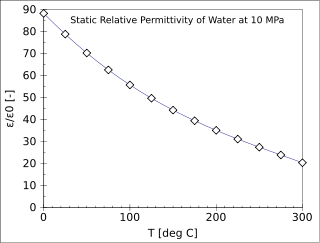
The relative permittivity is the permittivity of a material expressed as a ratio with the electric permittivity of a vacuum. A dielectric is an insulating material, and the dielectric constant of an insulator measures the ability of the insulator to store electric energy in an electrical field.

Longitudinal waves are waves in which the vibration of the medium is parallel to the direction the wave travels and displacement of the medium is in the same direction of the wave propagation. Mechanical longitudinal waves are also called compressional or compression waves, because they produce compression and rarefaction when traveling through a medium, and pressure waves, because they produce increases and decreases in pressure. A wave along the length of a stretched Slinky toy, where the distance between coils increases and decreases, is a good visualization. Real-world examples include sound waves and seismic P-waves.

A rectenna is a special type of receiving antenna that is used for converting electromagnetic energy into direct current (DC) electricity. They are used in wireless power transmission systems that transmit power by radio waves. A simple rectenna element consists of a dipole antenna with a diode connected across the dipole elements. The diode rectifies the AC induced in the antenna by the microwaves, to produce DC power, which powers a load connected across the diode. Schottky diodes are usually used because they have the lowest voltage drop and highest speed and therefore have the lowest power losses due to conduction and switching. Large rectennas consist of an array of many power receiving elements such as dipole antennas.
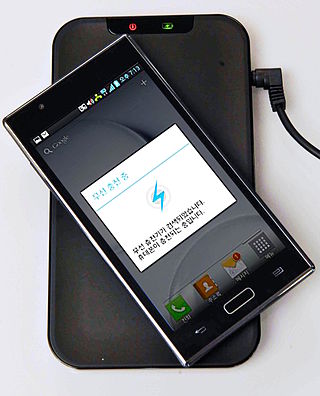
Wireless power transfer (WPT), wireless power transmission, wireless energy transmission (WET), or electromagnetic power transfer is the transmission of electrical energy without wires as a physical link. In a wireless power transmission system, an electrically powered transmitter device generates a time-varying electromagnetic field that transmits power across space to a receiver device; the receiver device extracts power from the field and supplies it to an electrical load. The technology of wireless power transmission can eliminate the use of the wires and batteries, thereby increasing the mobility, convenience, and safety of an electronic device for all users. Wireless power transfer is useful to power electrical devices where interconnecting wires are inconvenient, hazardous, or are not possible.

Nader Engheta is an Iranian-American scientist. He has made pioneering contributions to the fields of metamaterials, transformation optics, plasmonic optics, nanophotonics, graphene photonics, nano-materials, nanoscale optics, nano-antennas and miniaturized antennas, physics and reverse-engineering of polarization vision in nature, bio-inspired optical imaging, fractional paradigm in electrodynamics, and electromagnetics and microwaves.
Antti V. Räisänen, is a Finnish scientist. He is the Professor and Head of the Department of Radio Science and Engineering in Aalto University. He is also the Director of SMARAD.
Frank Wentz is the CEO and director of Remote Sensing Systems, a company he founded in 1974, which specializes in satellite microwave remote sensing research. Together with Carl Mears, he is best known for developing a satellite temperature record from MSU and AMSU. Intercomparison of this record with the earlier UAH satellite temperature record, developed by John Christy and Roy Spencer, revealed deficiencies in the earlier work; specifically, the warming trend in the RSS version is larger than the University of Alabama in Huntsville (UAH) one. From 1978 to 1982, Wentz was a member of NASA's SeaSat Experiment Team involved in the development of physically based retrieval methods for microwave scatterometers and radiometers. He has also investigated the effect of climate change on satellite-derived evaporation, precipitation and surface wind values. His findings are different from most climate change model predictions.

Alexander A. Balandin is an electrical engineer, solid-state physicist, and materials scientist best known for the experimental discovery of unique thermal properties of graphene and their theoretical explanation; studies of phonons in nanostructures and low-dimensional materials, which led to the development of the field of phonon engineering; investigation of low-frequency electronic noise in materials and devices; and demonstration of the first charge-density-wave quantum devices operating at room temperature.
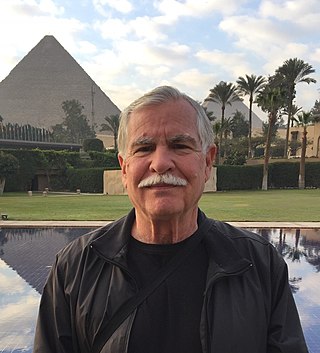
Kurt E. Petersen is an American inventor and entrepreneur. He is known primarily for his work on microelectromechanical systems. Petersen was elected a member of the United States National Academy of Engineering in 2001.

Danielle Amanda George is a Professor of Radio frequency engineering in the Department of Electrical and Electronic Engineering (EEE) and Associate Dean for Teaching and Learning at the University of Manchester in the UK. George became the 139th President of the Institution of Engineering and Technology in October 2020.

Professor Branka Vucetic is an Australian-based expert in coding theory and its applications in wireless technology. She works at the University of Sydney where she holds the positions of ARC Laureate Fellow, Peter Nicol Russell Chair in Telecommunications, and Director of the Centre of Excellence in Telecommunications.
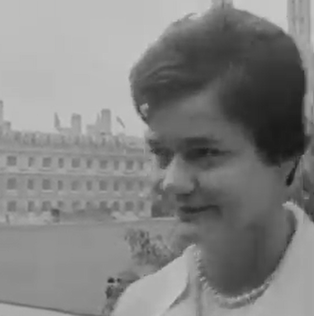
Elizabeth Laverick was a British engineer who became technical director of Elliott Automation Radar Systems. Laverick was the first female deputy secretary of the Institution of Electrical Engineers and president of the Women's Engineering Society. She was the first woman to receive a PhD in a scientific curriculum at Durham University, and was appointed an OBE in 1993.
Susan Trolier-McKinstry is an American materials scientist. She is the Steward S. Flaschen Professor of Materials Science and Engineering and Electrical Engineering at Pennsylvania State University, Director of the W. M. Keck Smart Materials Integration Laboratory, and co-director of the Nanofabrication facility.
Chiara Daraio is an Italian-American materials scientist and acoustical engineer. She is the G. Bradford Jones Professor of Mechanical Engineering and Applied Physics at the California Institute of Technology.
Mahta Moghaddam is an Iranian-American electrical and computer engineer and William M. Hogue Professor of Electrical Engineering in the Ming Hsieh Department of Electrical and Computer Engineering at the University of Southern California Viterbi School of Engineering. Moghaddam is also the president of the IEEE Antennas and Propagation Society and is known for developing sensor systems and algorithms for high-resolution characterization of the environment to quantify the effects of climate change. She also has developed innovative tools using microwave technology to visualize biological structures and target them in real-time with high-power focused microwave ablation.
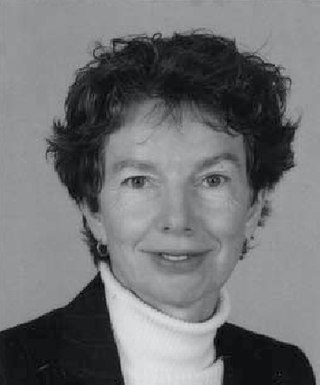
Janina Elżbieta Mazierska is a Polish microwave engineer known for her work measuring the microwave properties of materials including low-loss dielectrics and high-temperature superconductors. She has worked as a professor in Poland, Nigeria, Australia, and New Zealand, and was the first woman to head the Asia Pacific regional branch of the IEEE.

Jürgen W. Czarske is a German electrical engineer and a measurement system technician. He is the director of the TU Dresden Biomedical Computational Laser Systems competence center and a co-opted professor of physics.
Arthur Aaron Oliner was an American physicist and electrical engineer, who was professor emeritus at department of electrical and computer engineering at New York University-Polytechnic. Best known for his contributions to engineering electromagnetics and antenna theory, he is regarded as a pioneer of leaky wave theory and leaky wave antennas.
Susan Lepri is an American space scientist and is currently Professor of Climate and Space Sciences and Engineering at the University of Michigan. She led development of portions of the Heavy Ion Sensor (HIS) which was launched onboard the European Space Agency's Solar Orbiter mission in February 2020. She has been director of the University of Michigan Space Physics Research Laboratory (SPRL) since 2021.
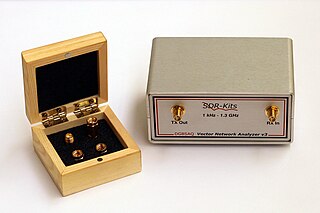
Nicolson–Ross–Weir method is a measurement technique for determination of complex permittivities and permeabilities of material samples for microwave frequencies. The method is based on insertion of a material sample with a known thickness inside a waveguide, such as a coaxial cable or a rectangular waveguide, after which the dispersion data is extracted from the resulting scattering parameters. The method is named after A. M. Nicolson and G. F. Ross, and W. B. Weir, who developed the approach in 1970 and 1974, respectively.
References
- ↑ "About Microwave Measurement Systems, LLC". www.mmstech.com. Retrieved 10 August 2019.
- ↑ "IEC News 03.05.2003". www.nanotech-now.com. Retrieved 10 August 2019.
- ↑ "Vasundara V. Varadan". ieeexplore.ieee.org. Retrieved 10 August 2019.
- 1 2 "AAUW Branching Out" (PDF). AAUW State College. Retrieved 10 August 2019.
- 1 2 3 4 Popular Science. Bonnier Corporation. 1995. p. 25.
green lab Vasundara Varadan.
- 1 2 "Microwave Measurement Systems". www.mmstech.com. Retrieved 10 August 2019.
- ↑ "Energy Conservation Center to Unveil Outreach Vehicle". University of Arkansas News. Retrieved 10 August 2019.